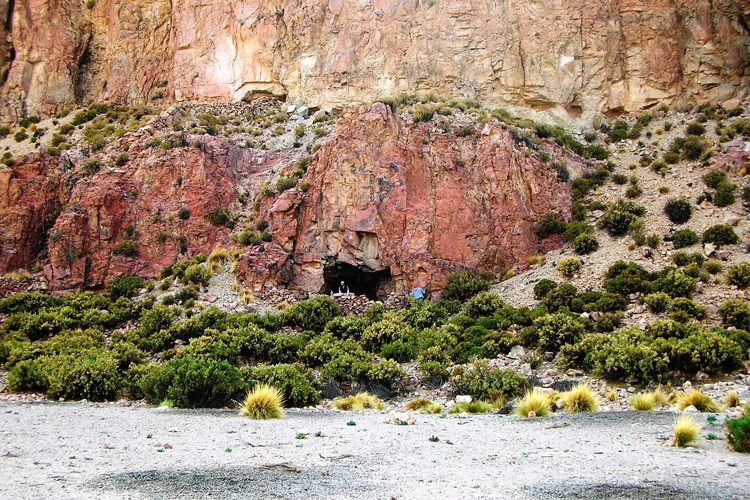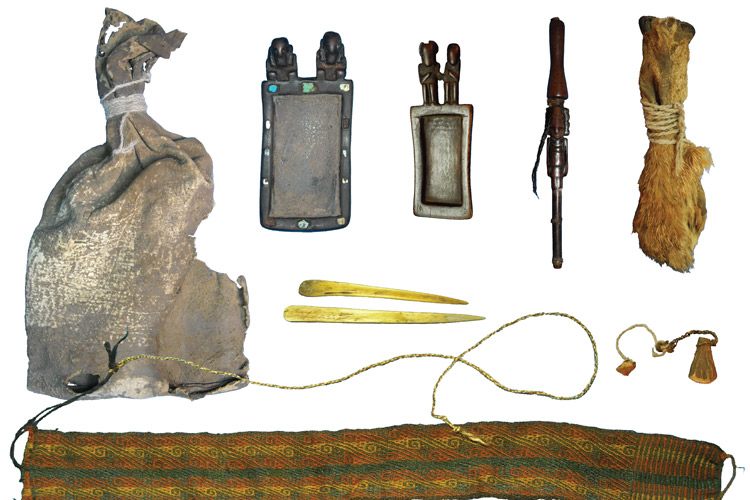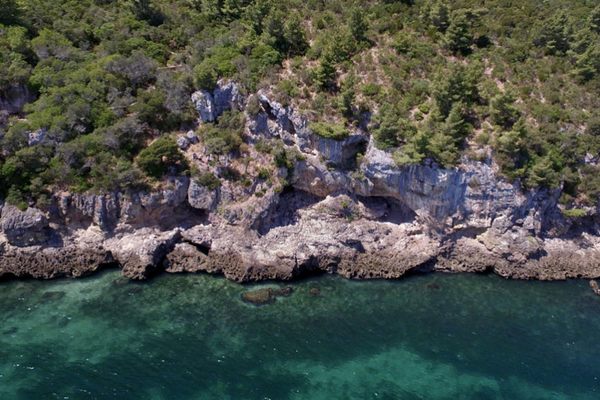In a Remote Bolivian Cave, Evidence of a Trippy Ritual
Found in a sack made of fox snouts.

The Lipez Altiplano region of southwestern Bolivia is known for being extremely arid and extremely remote. And both of those attributes contributed to the preservation of evidence of a very old, very trippy ritual. Deep in a cave at 13,000 feet, archaeologists found a 1,000-year-old leather bundle containing ancient tools and plants dedicated to causing vivid visions and altered perceptions of time.
“The extreme aridity of the region in addition to the fact that these remains were recovered from a dry rock shelter were critical for the preservation of these remains,” says lead archaeologist José Capriles of Pennsylvania State University. “In most cases, leather, textiles, wood, and other vegetable materials tend to degrade quite fast but the extreme aridity and burial of these materials helped on their preservation.” It also helps that the cave is so far from modern civilization that it had been left undisturbed for a millennia or more.
This kit, which dates to roughly 550 to 950, when the pre-Inca Tiwanaku civilization lived among llamas and alpacas in these Andean highlands, contained carved wooden snuffing tablets and a snuffing tube, human hair, llama bone spatulas, and dried plant material. The plant mix was found in a pouch made of three fox snouts sewn together.

Capriles and his colleague Juan Albarracín-Jordán of the Universidad Mayor de San Andrés in Bolivia discovered the plant material and enlisted University of California, Berkeley archaeologist Melanie Miller to identify what they had. After running liquid chromatography tandem mass spectrometry tests, the team determined found at least five psychoactive plants: Banisteriopsis caapi (the primary ingredient of the currently popular psychedelic drink ayahuasca), Erythroxylum (coca), Anadenanthera (cebil or wilka), and the leaves of the chacruna (Psychotria viridis) shrub. It would have been a powerful cocktail. According to Capriles, “The plants are not poisonous [but] depending on how they are consumed, how much, and the proportion of alkaloids, they can be quite potent and toxic.”
The archaeological team had focused on the caves in this remote region to learn more about early hunter-gatherers. “Although the region has an abundance of these sites, most of them are open-air camps, subject to wind erosion and therefore with little stratigraphy,” says Capriles. “By excavating rock shelters, we hoped to gain a better outlook into these early societies.” One thing is for sure: These Andean societies definitely knew how to trip.

Interestingly, these plants are not native to the high-altitude region where they were found. Instead, they have historically been found in the jungle, so this discovery suggests they arrived in the area with a traveler or through trade. “Although our project verified the use of many rock shelters as temporary campsites for early mobile foragers, it also revealed an interesting record of later societies that used these places for funerary and other ritual purposes. It was excavating these later contexts that we encountered the ritual bundle that we describe in the paper,” Capriles says. Though the team didn’t find any human bones in the cave, the presence of a medicinal bundle indicates that the location must have been significant, and ripe with rituals of life and death.
“Bundles such as the one we discovered have been previously found associated with human burials,” Capriles says. “The bundle was placed above a plastered surface that was a part of a structure with a plastered floor that at one point completely sealed the rock shelter. There are examples of such structures elsewhere in the region and in those cases, they seemed to have been used primarily as burial structures in a context of ancestor veneration.” The structure in this case appears to have been destroyed, which may indicate a dispute over the site. Maybe it wasn’t all so chill after all.














Follow us on Twitter to get the latest on the world's hidden wonders.
Like us on Facebook to get the latest on the world's hidden wonders.
Follow us on Twitter Like us on Facebook